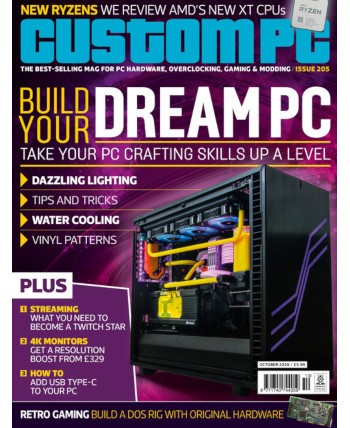
First the Raspberry Pi HQ Camera Module. The third full revision of the Camera Serial Interface (CSI)-connected low-cost camera add-on for Raspberry Pi and compatible single-board computers – after the original Raspberry Pi Camera Module was replaced with a higher-quality Sony sensor upgrade – the HQ Camera Module is built around a 12.3-megapixel Sony IMX477 sensor, offering increased resolution and improved low-light performance.
The biggest change, though, is that the lens has gone: Instead of a small plastic lens pre-fitted to the sensor, the HQ Camera Module accepts C- and CS-mount lenses – the same type of lens you’d find for security camera sensors. Two lenses make up the official offerings – a 6mm wide-angle and a 16mm telephoto – with third parties selling various alternatives including microscope-style macro lenses.
The Wio Terminal has a sensor of its own, but it’s not a camera: it’s an almost-all-in-one development board built around Microchip’s ATSAMD51 system-on-chip. Packed into a plastic housing with 2.4″ 320×240 colour LCD, the development board includes buttons, joystick, buzzer, LED, light sensor, and an infrared emitter – but, oddly, no battery, which needs to be added using an external accessory which considerably increases the device’s bulk.
Perhaps the most interesting feature of the Wio Terminal, though, is its general-purpose input/output (GPIO) header: a 40-pin female header, it shares the Raspberry Pi pinout and allows the Wio Terminal to act as a standalone device or to be connected to a Raspberry Pi as a Hardware Attached on Top (HAT)-style accessory – though doing so without some kind of extension cable covers the sensors on the underside.
Finally, Japansoft is a follow-up to the impressive Britsoft which follows exactly the same format: selected bite-sized extracts from interviews with notable game developers, only this time – as the name implies – looking at the Japanese games industry rather than the British. Where Britsoft culled its material from interviews carried out for the 2014 documentary From Bedrooms to Billions, Japansoft isn’t an original publication either: everything within comes from John Szczepaniak’s The Untold History of Japanese Game Developers and is simply reformatted to match the style of Britsoft.
That’s not to say Japansoft isn’t worth reading, but it does mean that anyone who has already seen Szczepaniak’s work will find nothing new. It also makes no effort to fact-check any of the claims within, instead placing a warning that its contents do not represent “a verified factual account” of the history presented.
Custom PC Issue 205 is available now from all good newsagents, supermarkets, and online with global delivery from the official website.

